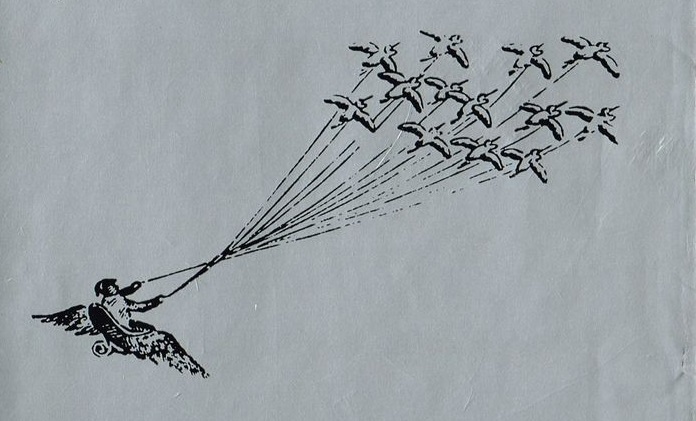
He cites appalling statistics to show that 1.024 per cent of the time squandered each Christmas in reckless shopping and thoughtless churchgoing brings the nation closer to its doom by five years. A few readers protested, but Johnnie was able to demolish their muddled arguments, and meanwhile the Society for the Abolition of Christmas increased. But Johnnie was troubled. Not only did Christmas rage throughout the kingdom as usual that year, but he had private information that many of the Society’s members had broken the Oath of Abstention.
‘The Leaf Sweeper’, from The Complete Short Stories by Muriel Spark
My first encounter with the writing of Muriel Spark was through the 1975 BBC adaptation of The Girls of Slender Means, which I had sought out after seeing it mentioned in one of Clive James’s TV reviews. I enjoyed the first episode more than I understood it. It was camp – arch, but not cold. Intrigued and hoping to get a handle on what was going on, I ordered the book as well as this short story collection.
The pace of Spark’s writing is abrasive. The things on the screen or the page are part of a work in which time moves as fast as it can do in the real world. Reading the Complete Short Stories collection, the style isn’t something you get used to, you need to keep readjusting to it. This makes it difficult to write about – unlike the first few reviews on this blog, I’ve struggled to pick out one story to talk about.
That said, The Leaf Sweeper, a sketch lasting only a few pages, was a highlight for me. Johnnie, an anti-Christmas firebrand who now sweeps the leaves outside a mental asylum, meets his ghost, a parodically upbeat, yuletide-loving figure who gets on the nerves of his aunt. It’s one of a number of ghost stories in the collection, except of course Spark is less interested in horror than in what can be done with the form, playing with different archetypes and narrative devices.
One of the things I liked about these stories is that no character is entirely on the writer’s side, and the lucidity of the storytelling suits the ambiguity of this characterisation. The anarchist poet from The Girls of Slender Means is another example – the didacticism of the character doesn’t preclude the sympathy of the author or the audience, even as he’s boring Jane (Miriam Margolyes) to death. It’s easy to imagine a more straightforwardly satirical version that wouldn’t be as good.
The stories vary in length and tone, with some not really getting started, throwing some exposition out there before you turn the page to find the next one waiting for you. Even when I didn’t get on with a story, however, there were usually elements of it that I found compelling – they can be as eclectic as the collection as a whole is. The ones I liked the most were generally the ones that had more in the way of characterisation, so maybe I’d get more out Spark’s novels.



